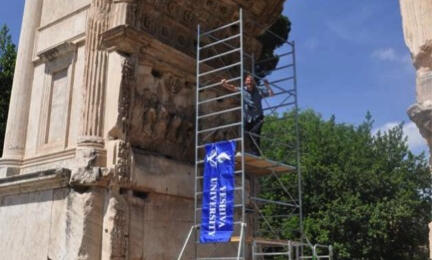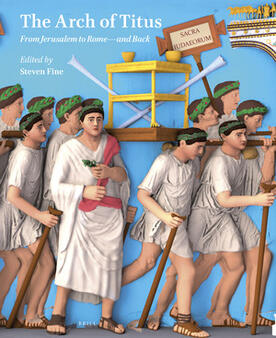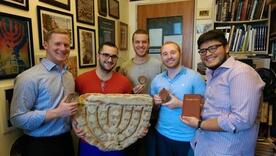
The Arch of Titus Project
The Arch of Titus Project is a multi-faceted exploration of the Arch of Titus, a triumphal arch built in Rome to commemorate the victory of the Roman general, later emperor, Titus, in the Jewish War of 66-74 CE. One of the most significant Roman artifacts to have survived, the Arch of Titus has been of continuing significance for both Jews and Christians for nearly two millennia. The image of the seven-branched menorah that appears on the Arch is now a symbol of the State of Israel.
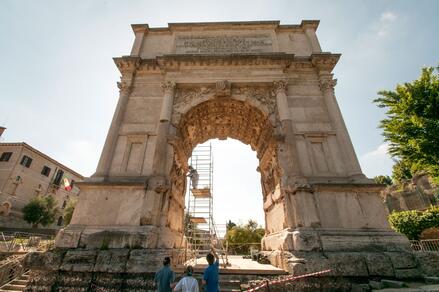
The Arch of Titus in the Roman Forum
Constructed soon after the death of Emperor Titus Flavius Vespasianus in 81 CE, the Arch of Titus commemorates the Roman triumph awarded to Emperor Vespasian and to Titus, his son and heir, for their victory in the Jewish War (66-74 CE). The most historically important element of the Arch’s iconography is the display of spolia from the war, including such sacred vessels from the Jerusalem Temple as the seven-branched Menorah and the Table of the Showbread. The first-century CE Jewish historian Flavius Josephus describes the triumph and the deposition of these artifacts in Rome, and they are also mentioned in later Rabbinic literature. The menorah on the Arch of Titus was chosen as the symbol of the State of Israel in 1949.
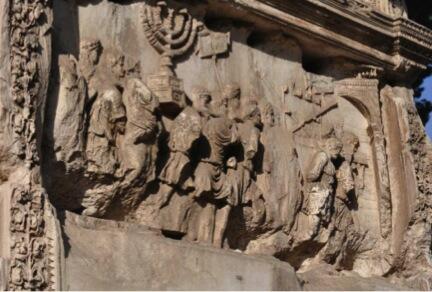
The Digital Restoration Project
In June 2012, an international team of scholars organized by the YU Center for Israel Studies assembled at the Arch of Titus and scanned its bas reliefs for evidence of their ancient colors. Using UV-VIS Absorption Spectrometry, our team of international historians and scientists looked for traces of color on the spoils relief so as to digitally restore what the Arch would have looked like in full color.
